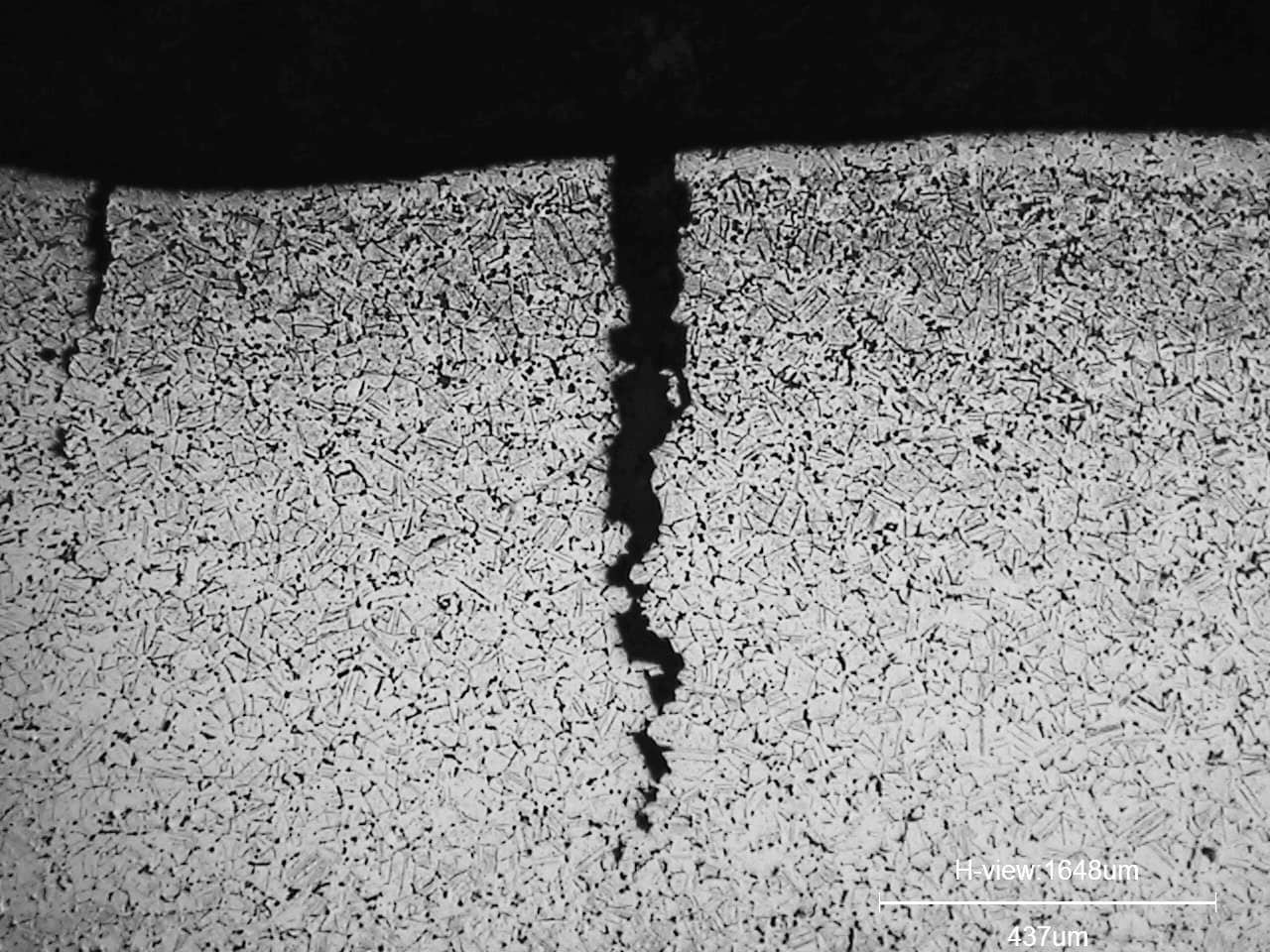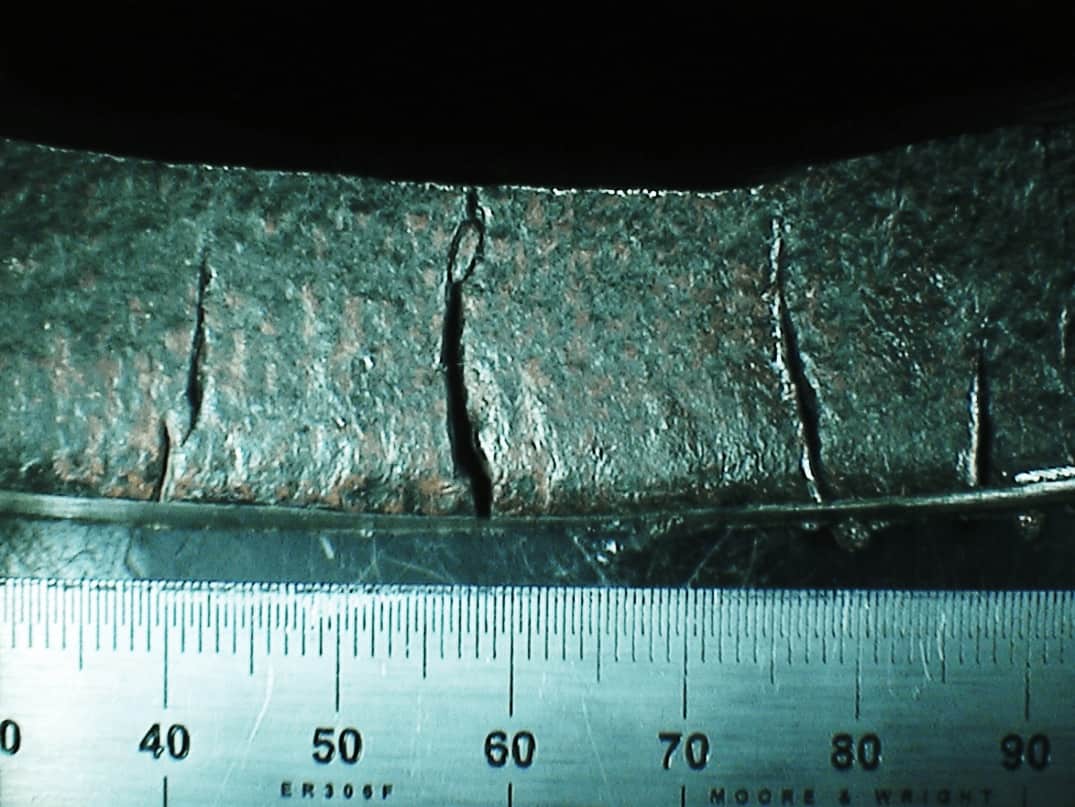#EpicFail – Sigma Phase Embrittlement
Sigma phase embrittlement affects stainless steels and nickel-iron alloys when exposed to elevated temperatures, typically between 540°C and 925°C. During this exposure, sigma phase precipitates can form, significantly reducing ductility and fracture toughness. This embrittlement increases the risk of catastrophic failure, especially during start-up or shut-down operations. These transitional phases can introduce thermal stresses that may cause cracking in the embrittled material.

The formation of sigma phase is influenced by several critical factors: alloy composition, temperature, and time at temperature. Among these, time at elevated temperature is the most significant factor for sigma phase development in susceptible alloys. Sigma phase is a hard, brittle intermetallic compound that forms through metallurgical changes during prolonged exposure to high temperatures. Its precipitation not only reduces mechanical toughness but can also increase susceptibility to intergranular corrosion. Alloys with higher chromium and molybdenum content are particularly prone to more rapid and extensive sigma phase formation.
This phase typically forms in ferritic (Fe-Cr), martensitic (Fe-Cr), austenitic (Fe-Cr-Ni), and duplex stainless steels when they are exposed to temperatures between 540 °C to 925 °C. Embrittlement can occur either by holding the material within this transformation range or by cooling through it. Sigma phase develops most readily from the ferrite phase, which is present in weld deposits of 300 series stainless steels and duplex stainless steels. Duplex stainless steel base metals, which have approximately 50% ferrite, are especially susceptible and can be susceptible during manufacture and welding. Although sigma phase can also form in the austenite phase of 300 series stainless steel base metals, it typically does so at a slower rate.
Some 300 series stainless steels can develop between 10% and 15% sigma phase. Cast austenitic stainless steels, due to their higher ferrite content (up to 40%), can experience significantly more sigma formation than their wrought counterparts. As a result, these cast materials may exhibit very poor ductility. The formation of sigma phase can occur relatively quickly in weld metals.
While sigma phase increases the tensile and yield strength of stainless steels slightly compared to solution-annealed material, this comes at the cost of reduced ductility. This is evident through lower values of percent elongation, reduced cross-sectional area, and slightly increased hardness. In general, stainless steels containing sigma phase can still handle operating stresses at high temperatures. However, upon cooling below approximately 260 °C, they may exhibit a complete lack of fracture toughness, as shown by Charpy impact tests. A 316 stainless steel for example can have a 90% reduction in Charpy impact toughness after only 8 months exposure to a temperature of 700°C.

The most effective way to prevent sigma phase embrittlement is to select alloys that are inherently resistant to sigma phase formation. Alternatively, avoiding prolonged exposure to the embrittling temperature range—typically between 540 °C to 925 °C can help preserve the material’s toughness. Due to the severe loss of fracture ductility at room temperature, it’s critical to avoid applying high stresses to sigmatised materials during plant shutdowns or cool-down periods. Under these conditions, brittle fracture can occur unexpectedly, leading to catastrophic failure.
Although it is technically possible to reverse sigma phase formation in 300 series stainless steels through solution annealing followed by water quenching, this process is often impractical for most industrial equipment due to size, cost, and logistical limitations.
In welds, sigma phase formation is typically minimised by controlling the ferrite content. For instance, specifying ferrite content within a range of 5% to 9% in the weld metal—such as for Type 347 stainless steel—helps to reduce the likelihood of sigma phase precipitation. While limiting the maximum ferrite content reduces the risk of sigma phase formation during service or fabrication, maintaining a minimum amount is also necessary to prevent hot cracking during welding.
For stainless steel weld-overlayed Cr-Mo components, fabrication procedures should be designed to minimise the overlay’s exposure to post-weld heat treatment (PWHT) temperatures of the base metal, especially in areas subject to high stress. By reducing unnecessary thermal exposure during fabrication, the potential for sigma phase precipitation in critical zones can be significantly lowered.
For more information or expert advice on sigma phase embrittlement and its prevention, feel free to contact us at info@r-techmaterials.com. Our team of specialists can assist with material integrity challenges and provide support to ensure the safety and longevity of your engineering systems.